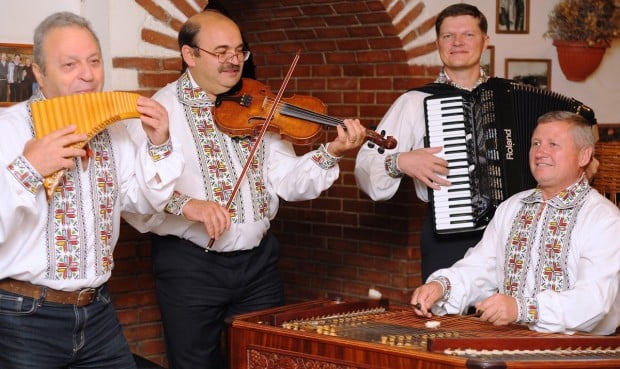Like Moldova’s
literary history, this small country shares many of the same musical elements
as its larger neighbor, Romania. And really, a lot of their music is stemmed
from the traditions of Balkan music and other Eastern European styles. (Technically,
Moldova is not considered a Balkan state, even though portions of Romania is sometimes
included. But they share some common history, so, you know, whatever. I’m
including it anyway.)
Folk music
continued even during the Soviet years. However, they were really worried about
their close cultural ties with Romania, so certain aspects of their music and
culture were squashed. One key part of their culture that finds its way into
their literature and music is a type of ballad called the Miorita. The
Orchestra of Moldovan Folk Music and Dance plays folk music from not only
Moldova (hence their name), but also of the region in general.
Many of the
instruments heard in Moldovan music are also played throughout much of Central
and Eastern Europe. One instrument that can be heard in Moldovan music is the
cimbalom, which is like a hammered dulcimer. (I sooooo want to buy a hammered
dulcimer. I love this instrument!) Another instrument is the ney (also spelled
nai), which is like a pan flute. Other traditional instruments include the
violin, the flute, and the bagpipes.
Folk music and folk
dancing go hand in hand. One of the oldest dance troupes in the country is
known as Joc, formally known as National Academic Ensemble of Folk Dance.
Dancing is often performed at festivals and other events. The current director,
Vladimir Curbet, has been teaching and directing there since 1957. He’s
currently 85 or 86, so that means he’s been working there for the past 59 or so
years!
Several years ago
(ok, like more than a decade now), I was working at Mori no Ike (the Japanese
camp of Concordia Language Villages in northern Minnesota), and every year,
they have an International Day (known as I-Day). Each I-Day has a theme song,
typically a song that is not in any of the languages taught at CLV, and
everyone learns a dance to perform altogether. One year, we used the song
“Dragostea Din Tei” by the band O-Zone. I knew it was in Romanian, so I figured
they were from Romania, but I learned this past week they are actually from
Moldova! (And then T.I. and Rihanna used this song as the basis of their song
“Life Your Life,” and I was all hipster, like “I already knew this song, yo.”)
So, I finally listened to O-Zone’s whole album this song was from. Much of it
is in a similar style as their most famous song. It’s fairly catchy with a lot
of synthesized sound effects and Europop riffs.
I also listened to
Alternosfera. They are like a hard rock band in many of their songs, but then
they’ll incorporate some elements of classical music and folk music into their
songs as well. I’m a fan of stretching and merging musical genres, so I was
fairly intrigued by their music.
Andrew Rayel is
another musician/DJ who mainly works in trance/techno/electronica (bordering on
club pop at times), another one of my favorite genres. I’ve never heard of him
before this, but I’m quickly becoming a fan of his works. He apparently has a radio show called "Find Your Harmony." I may make a specific
playlist of his stuff.
One band that kept
coming up in searches for Moldovan music is the band Zdob si Zdub. They’re a
rock band, but they have a kind of early-to-mid-1990s sound. It’s almost
reminiscent of something, but I just can’t put my finger on it. Each song
reminds me of a different band in a slight, nondescript way, sometimes Gogol
Bordello, sometimes Crash Test Dummies, sometimes They Might Be Giants,
sometimes I’m not even sure.
There were several
other musicians and DJs I listened to who only had a handful of songs available
on Spotify. Some of the others I sampled include Sunstroke Project, Radu Sirbu,
Natalia Barbu, Dan Balan, Arsenium, and Pavel Stratan.
Up next: the food

No comments:
Post a Comment